Camden Koukol
Reviews By Author
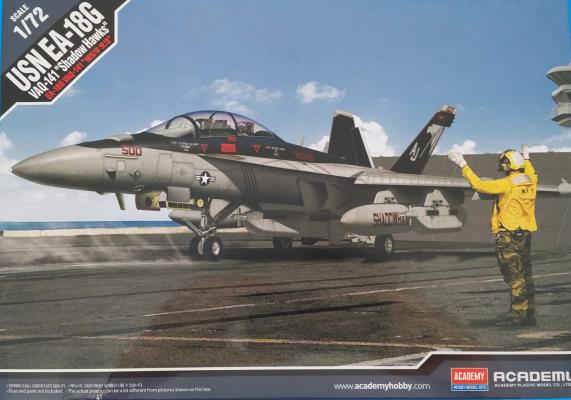
|
EA-18G "VAQ-141 Shadowhawks"Published:
BackgroundThe Electronic Aircraft (EA) EA-18G Growler is a modified version of the F/A-18F Super Hornet that is used in a naval strike package to jam enemy radar to make the strike package virtually invisible. The EA-18G Growler had its first test flight in August 2006, the later entered service in the U.S. Navy in September 2009. Our Australian allies later adopted the Growler in March of 2015. This aircraft is also able to provide self-defense with AIM-120 medium range air to air missiles, along with the Super Hornet’s speed and maneuverability. With this advanced technology, the Growler blinds the radar and the strike package is able to deliver its weapons with pinpoint accuracy with little or no resistance. In The BoxWhen you open the box, you are… more |
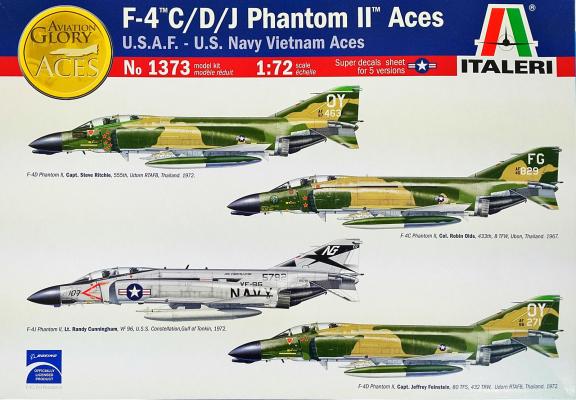
|
F-4 Phantom "Vietnam Aces"Published:
BackgroundOriginally developed as the Navy's primary fleet defense interceptor in the 1950'ss, the F-4 Phantom II rapidly evolved into the mainstay multiple fighter for the Navy, Air Force, and Marine Corps by the mid '60's. During the Vietnam War air war, the Phantom became the exclusive mount of all 6 American "ace" (airmen scoring 5 or more air-to-air victories) emerging from that conflict. In this release, Italeri presents 4 of the F-4's flown by Americas Vietnam aces. Markings and parts options are included for Navy F-4J "Showtime 100" flown by Randy Cunningham and Willy Driscoll, Air Force F-4C flown by Robin Olds, an F-4D flown by Jeff Feinstein, and an F-4D flown by Steve Ritchie and Chuck DeBellevue. Camden was inspired to do this build by the… more |
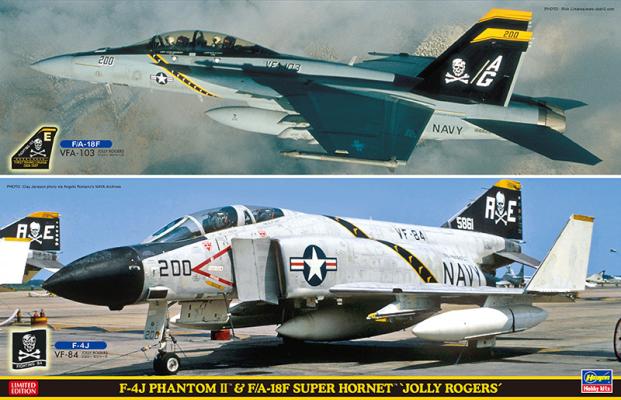
|
F-4J Phantom II & F/A-18F Super Hornet "Jolly Rogers" (2 kits) Limited EditionPublished:
BackgroundOf all of the US Naval Aviation fighter squadrons, VFA-103 has one of the most recognizable color and markings schemes since the Vietnam War. Nicknamed “The Jolly Rogers, ” the squadron boldly sports black and gold unit markings featuring the legendary “Jolly Roger” skull and crossbones. “The Jolly Rogers” were formed in 1944 as VF-17, and saw action under numerous squadron designations throughout their history. From the Vietnam War era through 1995, VF-84 claimed the “The Jolly Rogers” moniker. Upon VF-84’s inactivation in 1995, VFA-103 took up the “Jolly Rogers” mantle to keep a rich Navy tradition alive. Represented in this 2-kit set are 2 legendary aircraft originally conceived by McDonnel Douglas -- the F-4J Phantom II and the F/A-18F Super Hornet. The… more |
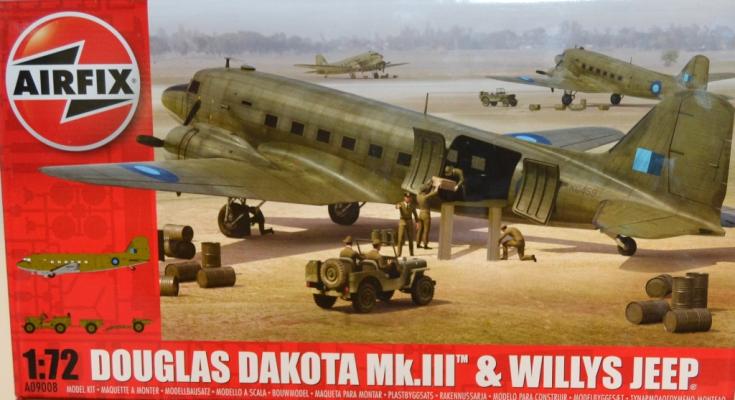
|
Douglas Dakota Mk III and Willys JeepPublished:
Background"Four things won the Second World War-the bazooka, the Jeep, the atom bomb, and the C-47 Gooney Bird," said General Dwight D. Eisenhower. The Dakota, the C-47’s designation in service with the Royal Air Force, was used in European and Southeast Asia (SEA) theaters of operation by the British throughout WW II. Modified from the civilian DC-3 airliner design, C-47/Dakota transports provided a host of unique benefits which included exceptional speed, payload, reliability, ruggedness, and versatility. Dakotas hauled everything from oxen to airborne troops, often operating from unimproved or improvised airfields near front lines. From 1942 until the end of the war in 1945, RAF Dakotas in SEA were instrumental in keeping Allied forces in China supplied… more |
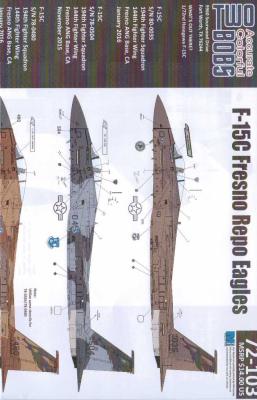
|
F-15C Fresno Repo EaglesPublished:
BackgroundDesigned to fulfill the US Air Force’s 1968 requirement for a lightweight air superiority fighter, the F-15 Eagle has arguably been the most successful and dominant air-to-air fighter since its entry into operational service in 1975. Even after over 40 years of exceptional performance and the emergence of the F-22 Raptor, the F-15 is expected to remain in service well into the 21st Century. In recent years, F-15C’s have served as aggressor aircraft in dissimilar air combat training at Nellis AFB, NV. With size and performance comparable to Russian Su-27 Flanker aircraft, F-15’s painted in Russian color schemes and employing Russian combat tactics have been a familiar training foe for hundreds of allied pilots. Recently the 65th… more |
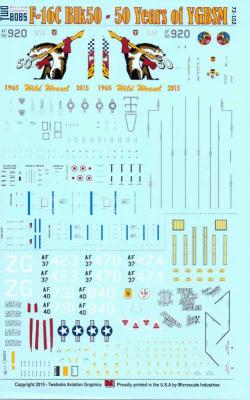
|
F-16C Blk 50 - 50 Yrs YGBSMPublished:
BackgroundDeveloped in the 1970’s and first fielded in the early 1980’s as the US Air Force’s lightweight multi-role fighter-bomber to replace the F-4 Phantom and A-7D Corsair II, the F-16 Fighting Falcon established itself as one of the most capable, reliable, and cost-effective aircraft in US Air Force history. One of the specialized roles the F-16C inherited from the F-4 was that of Suppression of Enemy Air Defenses (SEAD) - in Air Force parlance known as “Wild Weasel.” F-16C Block 50 and 52 aircraft equipped as Wild Weasels began production in 1991, and still serve as USAF’s primary SEAD platform. Since the inception of the Weasel mission in 1965, the unofficial motto of Weasel crews has been “You Gotta Be S(poofin’) Me” (the polite version), or just “YGBSM.” … more |
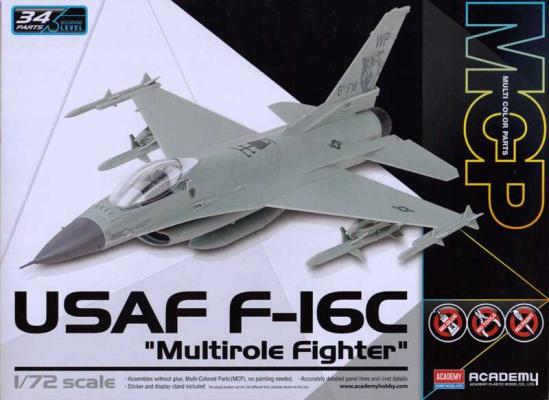
|
F-16C USAF Multirole FighterPublished:
BackgroundDeveloped in the 1970’s and first fielded in the early 1980’s as the US Air Force’s lightweight multirole fighter-bomber to replace the F-4 Phantom and A-7D Corsair II, the F-16 Fighting Falcon established itself as one of the most capable, reliable, and cost-effective aircraft in US Air Force history. One of the specialized roles the F-16C inherited from the F-4 was that of Suppression of Enemy Air Defenses (SEAD), in Air Force parlance known as “Wild Weasel.” F-16C Block 50 and 52 aircraft equipped as Wild Weasels began production in 1991, and still serve as USAF’s primary SEAD platform. The KitTargeted for new and young modelers, Academy’s well-proportioned likeness of the Block 50/52 F-16C comes equipped with stores clearly depicting it in… more |
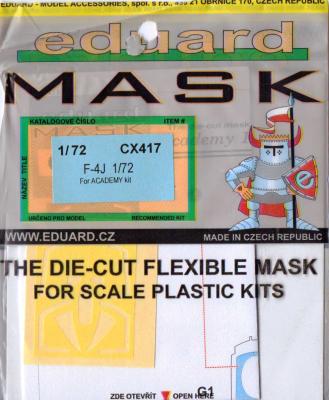
|
Masks for Academy F-4JPublished:
Simple but brilliant, Eduard’s pre-cut canopy masks now include a set for Academy’s 1/72 F-4J Phantom II kit. In this case, simplicity of application was demonstrated by 9 year-old Camden as he built his Academy F-4J Showtime 100 for a related IPMS/USA review. In a matter of minutes, the pre-cut masks were transferred to the model canopy and scraps for left-over mask material were used to fill in the holes. Fit of all pieces was spot-on. The masks adhered well throughout the construction and finishing process, spanning about 3 weeks’ time. At the end of the build, they peeled off with only one slight trace of residual adhesive, which was quickly lifted by the adhesive side of a piece of low-tack masking tape. A great tool for modelers of all skill levels, Eduard… more |
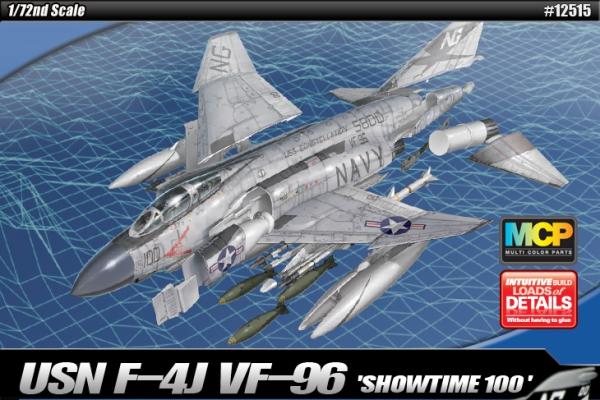
|
USN F-4J VF-96 'Showtime 100'Published:
BackgroundDeveloped as a fleet interceptor for the United States Navy in the 1950’s the F-4 Phantom became one of the most successful and prolific combat aircraft designs of the jet age, remaining in US service into the 1990’s. Tasting its first combat during the Vietnam War, Navy and Air Force Phantoms produced leading aces for both service branches. One of the most notable of those Phantoms was the F-4J, call-sign Showtime 100, flown by Lt Randy “Duke” Cunningham and Lt (jg) Willie “Irish” Driscoll on May 10th, 1972. During a raid on a North Vietnamese rail yard, the US strike package was challenged by enemy MiG-17 fighters. During the ensuing air-to-air engagement, Cunningham and Driscoll dispatched 2 of the MiG-17’s, and would then proceed to shoot down a third… more |
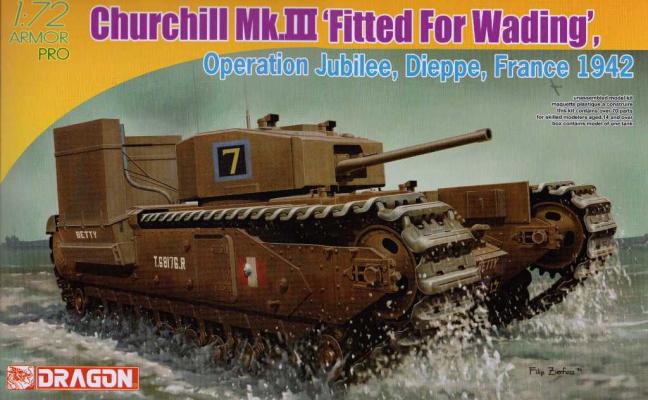
|
Churchill Mk III "Fitted for Wading" Operation Jubilee, Dieppe, France 1942Published:
BackgroundConceived and initially developed on the eve of World War II, the Churchill infantry tank was designed to provide infantry support in European conflicts, including trench warfare as seen in World War I. Although rushed into production early in the war to counter an anticipated German invasion of England, the Churchill matured through a number of marks to become a versatile and effective element of Allied armored forces. Some Mk III Churchills were fitted with special wading gear for amphibious landings. Most notable of such landings was the ill-fated Operation Jubilee, in which Canadian forces tested the feasibility of opposed amphibious landings on the European mainland in 1942. The ModelThis variant of Dragon’s Mk III Churchill features… more |
